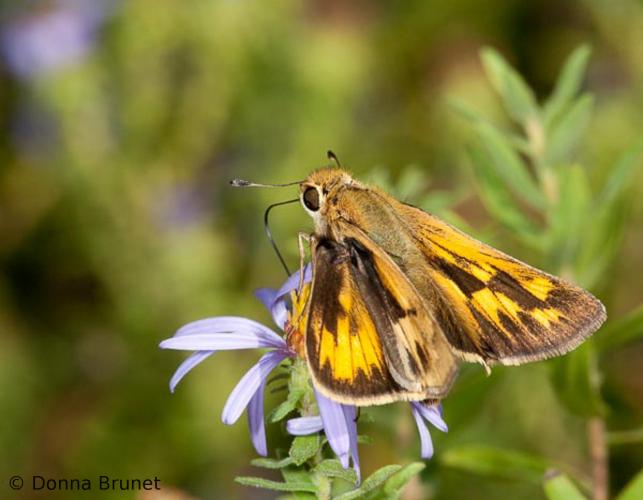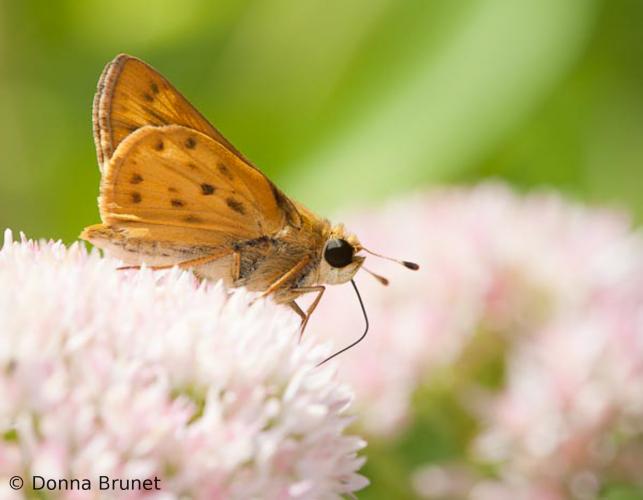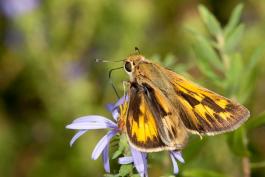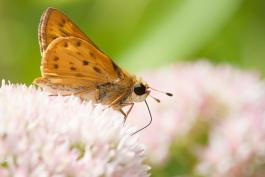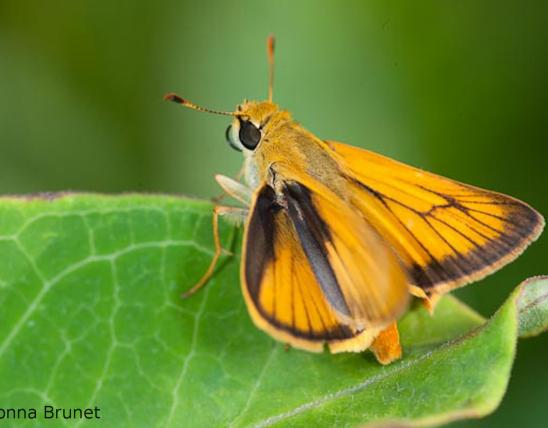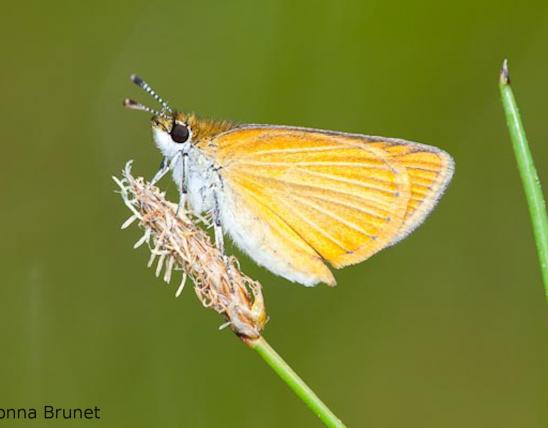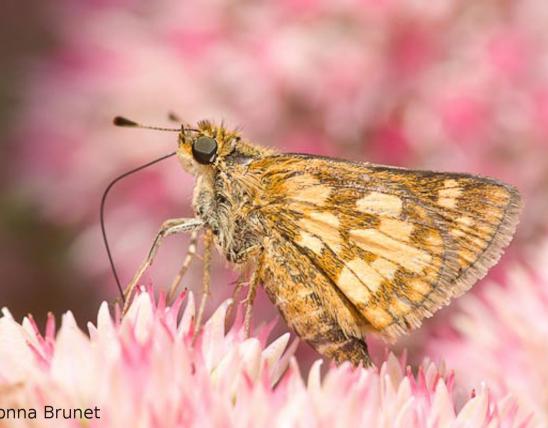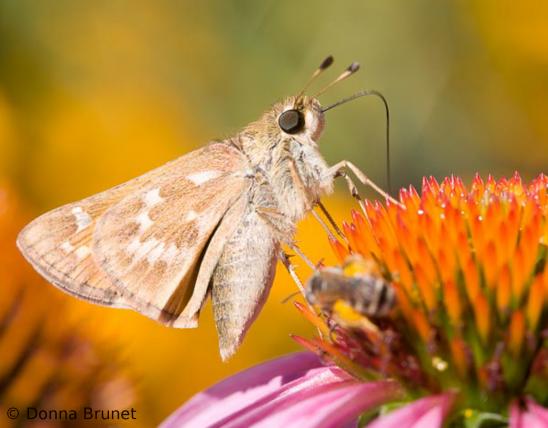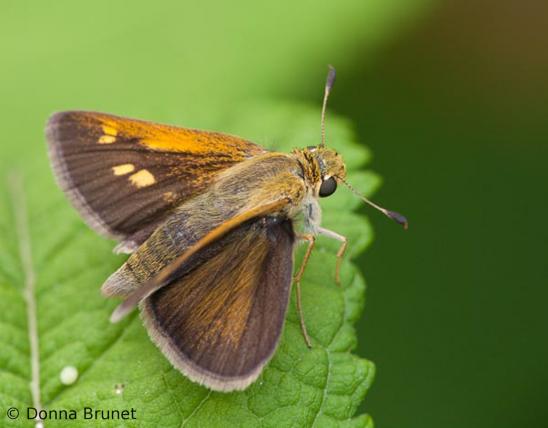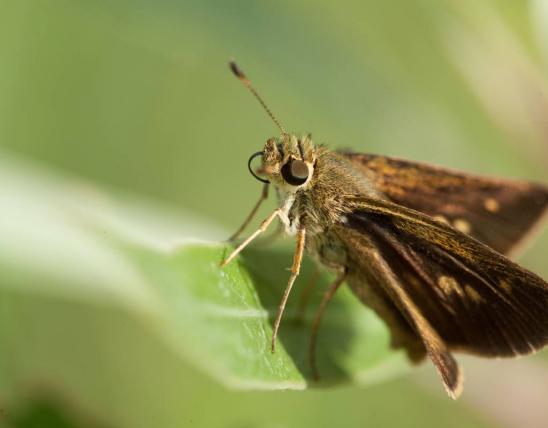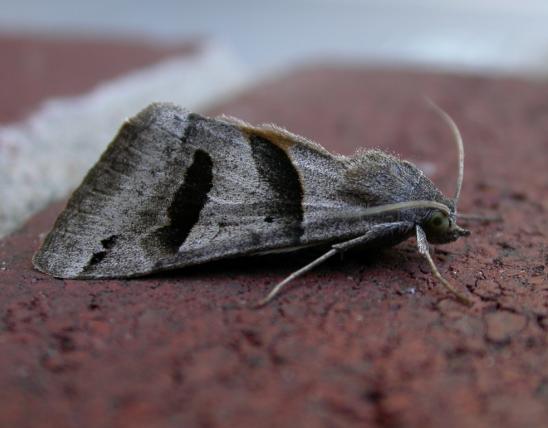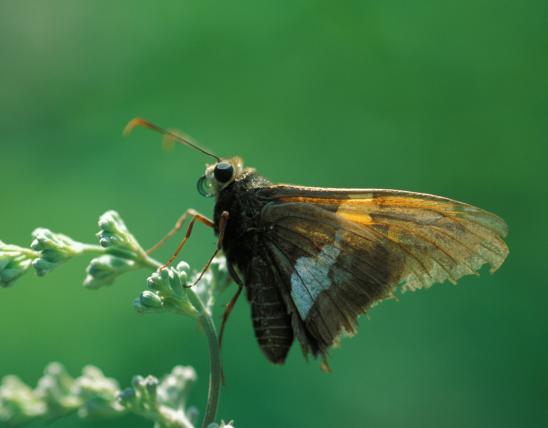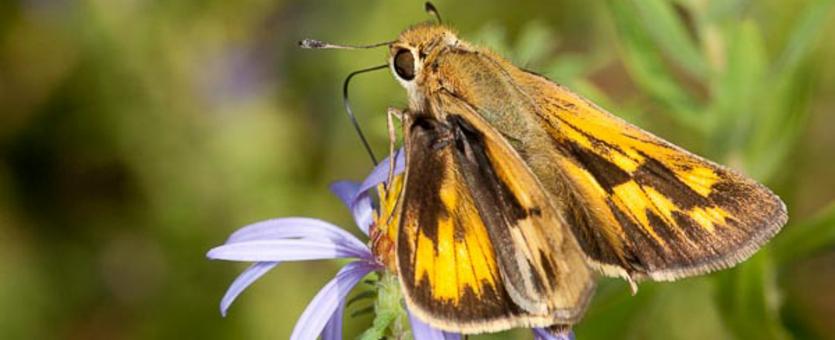
Male and female fiery skippers are very similar from below — both are orange with a sprinkling of small dark spots — but the males are more orange, usually with fewer spots. Fiery skippers have very short antennae, about as long as the head is wide.
On males, the hindwing upper surface is bright orange with a jagged dark border along the trailing edge. The jagged border makes the orange part look like licking flame tips.
Females are much browner than males. The upperside markings are similar to the males’ but wider, with a jagged brown border and dark rectangles bordering the orange along the leading edge of the wing. The hindwings have orange centers surrounded by brown; the central portion of the orange patch extends toward the base.
Larvae are grayish tan with a few dark narrow stripes, including one down the back. The knoblike head is black.
Similar species: Several other grass skippers in Missouri have a similar orange and brown coloration. Note the patterns above to identify the fiery skipper.
Wingspan: 1–1½ inches.
Statewide.
Habitat and Conservation
Fiery skippers do not overwinter in Missouri. They arrive from the south at the end of May, establishing breeding populations statewide in lawns, grasslands, forest edges, roadsides, and other grassy, open areas. Adults are present through October — until it freezes. They have a fast, darting flight. Numbers vary from year to year.
Food
The host plants, eaten by caterpillars, are various grasses, including crabgrass (Digitaria) and Bermuda grass (Cynodon dactylon). The caterpillars curl the grass leaves into a shelter, fixing it closed with silk. These are on or close to the ground, so you rarely see them. Adults visit flowers of many species. Zinnias are one of their favorites. Adults also take moisture and nutrients from damp ground or the edges of puddles.
Status
Summer resident. It does not overwinter here.
Life Cycle
Male fiery skippers perch to locate females, pursuing those that pass but also following other flying insects or objects, such as wind-blown leaves. Their response is prompted by movement, not color, since they will follow males and other insects that do not resemble females. Females lay eggs singly on the undersides of grass leaves or nearby objects. The caterpillars curl the grass leaves into a shelter, fixing it closed with silk. When it’s time to pupate, they remain in their grassy shelter. No stages of this skipper survive Missouri winters. Starting in late May, fiery skippers that overwinter in states to our south (and their descendants) gradually repopulate our state.
Human Connections
The fiery skipper, the sachem, and the whirlabout (Polites vibex, which does not occur in Missouri) are sometimes called the “three wizards,” apparently because of their zippy flying movements.
The species name, Phyleus, references a character from Greek mythology. In the 1800s, many species of butterflies and moths received scientific names based in Greek and Roman literature. The scientists who named them grew up at a time when classical literature was considered the foundation for an educated mind.
Ecosystem Connections
Territoriality in butterflies — where males establish an area as their own and chase other males out of — has been studied since the middle 1800s. Charles Darwin devoted a chapter to butterflies in The Descent of Man, discussing how male-male contests can determine which males would beget offspring, and which would not.
Skippers flit around quickly, but many predators eat them. Indeed, the flower clusters of many grassland plants where skippers gather nectar often harbor crab spiders, ambush bugs, robber flies, praying mantises, and other predators. They wait patiently for skippers to wander too close.
